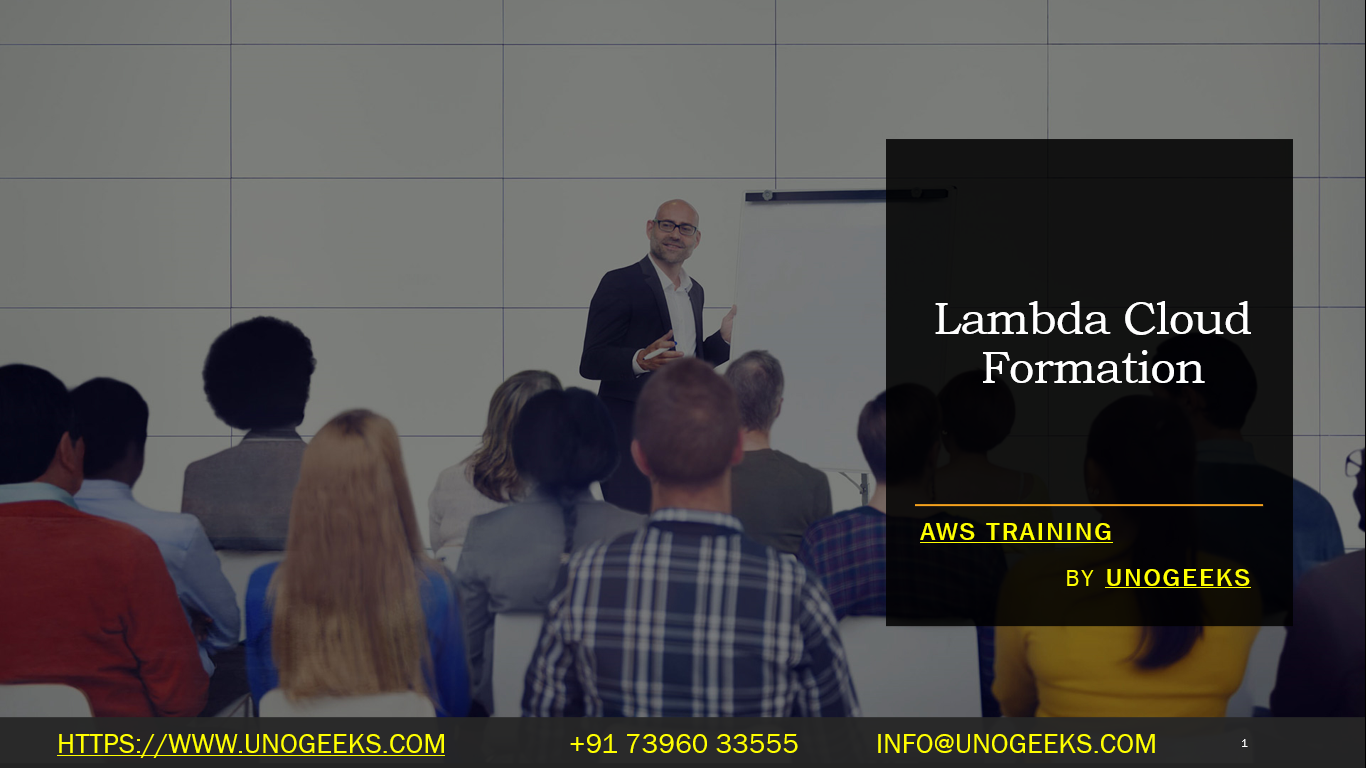Lambda CloudFormation
Lambda functions in the context of AWS CloudFormation refer to the use of AWS Lambda functions within a CloudFormation template. AWS CloudFormation is a service provided by Amazon Web Services (AWS) that allows you to define your infrastructure as code using JSON or YAML templates. This way, you can create, modify, and delete AWS resources in a predictable and automated manner.
AWS Lambda is a serverless compute service provided by AWS, allowing you to run code without provisioning or managing servers. It automatically scales and manages the infrastructure required to run your code, and you only pay for the compute time that you consume.
In a CloudFormation template, you can define Lambda functions using the AWS::Lambda::Function resource type. Here’s an example of how you might define a simple Lambda function in a CloudFormation template using YAML:
“`yaml
Resources:
MyLambdaFunction:
Type: AWS::Lambda::Function
Properties:
FunctionName: MyLambdaFunction
Runtime: nodejs14.x
Handler: index.handler
Role: !GetAtt MyLambdaExecutionRole.Arn
Code:
ZipFile: |
exports.handler = function(event, context) {
console.log(‘Hello from Lambda!’);
}
“`
In this example, we define a Lambda function named `MyLambdaFunction` with Node.js 14.x runtime. The `Handler` property specifies the entry point for the function code (in this case, it’s `index.handler`). The `Role` property references an IAM role (`MyLambdaExecutionRole`) that allows the Lambda function to interact with other AWS services.
Once you’ve defined your Lambda function in the CloudFormation template, you can create a CloudFormation stack using this template. AWS CloudFormation will then provision the necessary resources, including the Lambda function, based on the template specifications.
Keep in mind that this is just a basic example. You can customize the Lambda function and its properties further according to your specific requirements, such as setting environment variables, adjusting memory allocation, and configuring triggers.
Demo Day 1 Video:
Conclusion:
Unogeeks is the No.1 IT Training Institute for Amazon Web Services (AWS) Training. Anyone Disagree? Please drop in a comment
You can check out our other latest blogs on Amazon Web Services (AWS) Training here – AWS Blogs
You can check out our Best In Class Amazon Web Services (AWS) Training Details here – AWS Training

———————————-
For Training inquiries:
Call/Whatsapp: +91 73960 33555
Mail us at: info@unogeeks.com
Our Website ➜ https://unogeeks.com
Follow us:
Instagram: https://www.instagram.com/unogeeks
Facebook:https://www.facebook.com/UnogeeksSoftwareTrainingInstitute
Twitter: https://twitter.com/unogeeks
